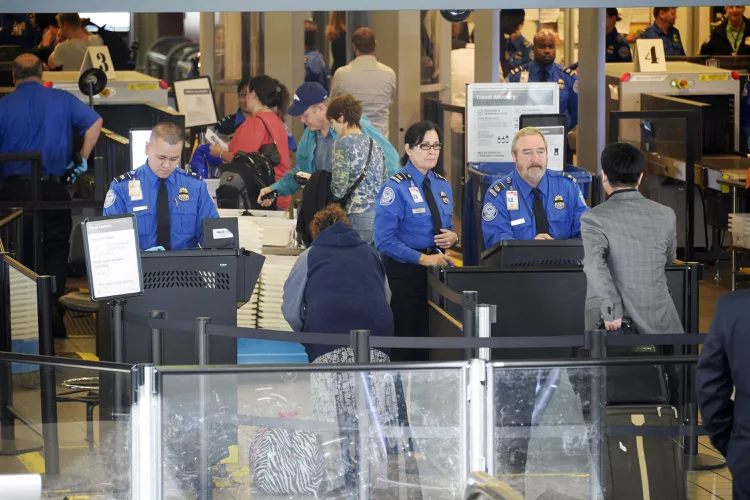Summary
- Many Employees Are Military Veterans
- TSA Agents Train on a Campus in Georgia
- The TSA Screens 2 Million Passengers Per Day
- Over 6 Million Passengers Use PreCheck Per Week
- The TSA Also Oversees Roadways, Railroads, Bridges and Tunnels
- The TSA Also Manages the Federal Air Marshal Service
- You Can Adopt TSA Canines
- The TSA Also Provides Law Enforcement
- The TSA Tests Its Own Equipment in a Lab
- The TSA Screens All Cargo on Passenger Planes
The Transportation Security Administration (TSA) was established on November 19, 2001, as part of the newly formed Department of Homeland Security in response to the tragic events of 9/11. The agency’s main responsibility is to protect the nation’s transportation systems, ensuring safe and secure movement for people and commerce.
Although most individuals interact with the TSA when traveling through an airport, this federal agency has multiple important functions. Below is a comprehensive list of 10 surprising things that the TSA does.
Many Employees Are Military Veterans

The TSA employs nearly 45,000 Transportation Security Officers (TSOs), who are tasked with providing security for over 20,000 domestic and 2,000 international flights daily. With more than 600 aviation transportation security inspectors, the TSA ensures regulatory compliance throughout the security system.
Remarkably, almost 60 percent of TSOs have over five years of experience in counterterrorism roles. In its early days, the TSA made a concerted effort to recruit military veterans, with around 20 percent of its workforce composed of veterans or active military personnel.
TSA Agents Train on a Campus in Georgia
Approximately 200 potential TSOs undergo two weeks of training at the Federal Law Enforcement Training Center (FLETC) in Glynco, Georgia. This facility boasts classrooms, dormitories, and a dining hall that provides over 4,000 meals daily. TSA’s specialized training module is supported by 20 classrooms, 10 simulation labs, and two mission-focused labs.
Additionally, the campus features four 6,500-square-foot checkpoint labs and mock airport setups for realistic training. After their time at Glynco, TSOs return to their home airports for hands-on experience.
The TSA Screens 2 Million Passengers Per Day
Handling security for nearly 440 airports, the TSA manages the screening of around 2 million passengers each day, totaling over 700 million annually. In addition, they process 1.3 million checked items and 4.9 million carry-on items per day, ensuring the detection of explosives and dangerous materials.
Over 6 Million Passengers Use PreCheck Per Week

Using a combination of over 800 advanced imaging technology machines and traditional x-ray systems, the TSA enhances passenger screening across airports in the U.S. The agency discovered more than 3,300 firearms at security checkpoints in 2016 alone.
Employing a risk-based security model, the TSA assumes the majority of travelers are not a threat. Therefore, they prioritize an intelligence-driven approach, focusing on higher-risk and unknown passengers. Lower-risk travelers can participate in the TSA PreCheck program, available at over 400 application centers nationwide, covering nearly 200 airports and serving more than six million passengers each week.
The TSA Also Oversees Roadways, Railroads, Bridges and Tunnels

The TSA’s mission extends beyond airports; it oversees more than four million miles of roadways, 140,000 miles of railroad track, 612,000 bridges, and nearly 500 tunnels. Furthermore, they monitor over 360 maritime ports and 3,700 marine terminals while keeping an eye on approximately 12,000 miles of coastline and 2.7 million miles of pipeline, along with 26 million daily trips on public transportation nationwide.
The TSA Also Manages the Federal Air Marshal Service

The Federal Air Marshal program was initiated in 1962 and has undergone several transformations since then. In the aftermath of 9/11, the program expanded significantly under President George W. Bush. In 2005, the program was officially moved under the TSA’s management, and now, armed air marshals are randomly deployed across U.S. airline flights originating from 20 cities, primarily in major hubs.
You Can Adopt TSA Canines

The TSA’s National Explosives Detection Canine Team Program, created in 2002, stands as the largest explosives detection canine program within DHS and the second-largest in the federal sector. TSA TSOs work alongside state and local law enforcement handlers at Joint Base San Antonio-Lackland in Texas, where they receive 10- to 12-week training with the dogs.
Training occurs in various settings, such as an airport gate or baggage claim area, with nearly 1,000 canine teams deployed nationwide. Those dogs that do not qualify during training can be adopted through TSA’s Canine Training Center Adoption Program.
The TSA Also Provides Law Enforcement

The TSA’s Visible Intermodal Prevention and Response (VIPR) teams enhance security across all transportation modes within the United States. This initiative operates under the TSA’s Office of Law Enforcement/Federal Air Marshal Service.
These teams collaborate with over 750 law enforcement and transportation organizations nationwide, conducting more than 8,500 operations during various significant events, such as presidential inaugurations, Special Olympics, and prominent music festivals.
The TSA Tests Its Own Equipment in a Lab
The TSA operates a lab in Atlantic City, New Jersey, dedicated to testing various tools and technologies to enhance security processes. Employees here are tasked with developing advanced detection technology, from initial concept through applied research, testing, evaluation, assessment, certification, and qualification testing.
A notable feature of the lab is its blast-resistant facility, designed to study and evaluate explosives detection equipment against a wide array of explosives, including domestic, foreign, and homemade varieties.
The TSA Screens All Cargo on Passenger Planes
Since 2007, TSOs have been responsible for screening 100 percent of cargo transported on passenger aircraft. They inspect around 280 last point-of-departure airports with direct international flights to the U.S. Each year, approximately 10 billion pounds of cargo is transported on commercial aircraft from foreign locations, with 40 countries participating in the national cargo screening program.





